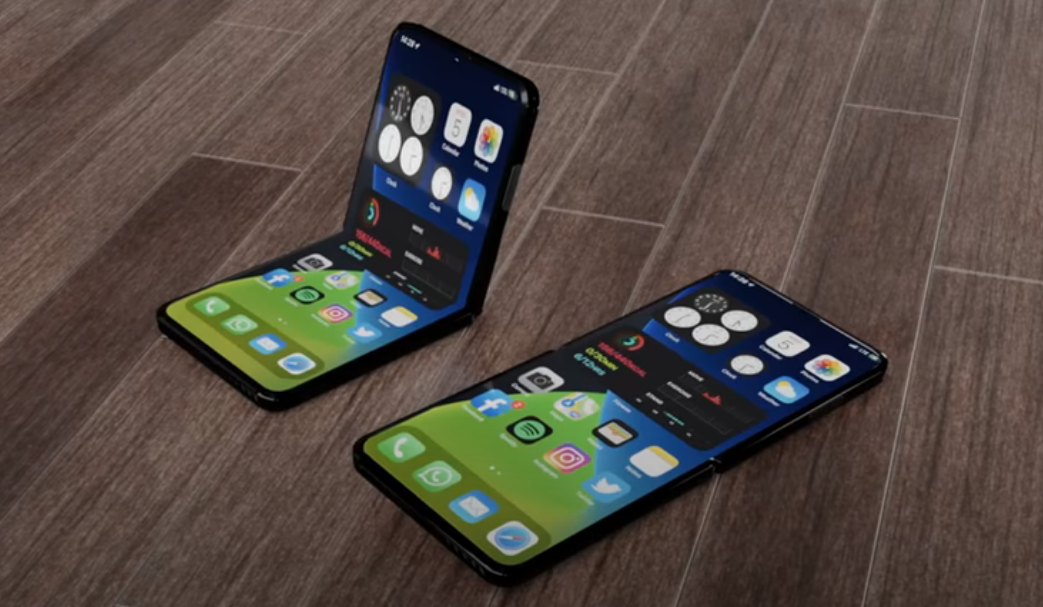

Your future iPhone could be a flexible friend: Apple is working on not one but two foldable iPhones, and they’ve already passed internal durability testing. That’s according to the Economic Daily News (UDN), which describes the bendy iPhones in some detail. You won’t be bending the iPhone 13 – or at least, you won’t be covered by the warranty if you do – but bendable iPhones aren’t much further away.
The two folding iPhone prototypes are very different devices, the report says. The first folding iPhone is a dual-screen device with a hinge connecting two normal sized displays, similar to Microsoft’s Surface Duo – a small iPad as well as an iPhone, really, aiming to trouble our list of the best tablets just as much as the best smartphones.
The second is a clamshell design more like the Moto RAZR or Samsung’s Galaxy Z Flip. That second device apparently has a single, flexible OLED display made by Samsung.
Basic pitches
These aren’t close to being production phones, UDN says: they’ve been created specifically to test the hinge mechanism to see if it delivers what Apple wants it to, and to decide which design may ultimately become a foldable iPhone. The actual devices have very basic internals: the work of designing the actual innards comes next.
We’ve known for a few years that Apple had bendy iPhones in its future: rumours of a folding iPhone date back to 2016 and Apple has filed multiple patents for folding devices and hinge mechanisms. So why is Apple taking its time when the likes of Samsung have had multiple models on the market already?
The short answer may be: glass. Speaking to Wired, John Bayne of glass wizards Corning explained that the polymer used in existing folding phones isn’t as good as glass: it’s more flexible but it’s easy to scratch, develops creases over time and can start to come loose from its frame. Corning (a previous supplier of glass to Apple) is working on a folding glass solution that's just 0.1mm thick and can bend to a radius of 5mm.
That said, a radius of 5mm is still pretty large, so even this new glass may not be totally suitable for a company as loving of thin design as Apple is – which is probably why the version with two separate screens is happening too.
Get all the latest news, reviews, deals and buying guides on gorgeous tech, home and active products from the T3 experts
Why Apple likes to wait
Apple is often hailed as an innovator, but it’s an innovator that doesn’t usually rush into new product categories: it prefers to learn from its rivals’ mistakes. If you think of new product categories as a minefield, Apple is happy to let rival firms detonate the landmines.
You can see that again and again in Apple’s products. The iPhone wasn’t the first smartphone and Microsoft was banging on about tablets a decade before the iPad; Apple was also relatively late in its embrace of technologies such as OLED displays and 5G. And now it appears to be taking a similar strategy with flexible displays.
We’ve already seen Samsung fall on its flexible face with the original Samsung Galaxy Fold, which it ultimately had to withdraw from sale and redesign due to screen problems; Apple has also reportedly bought hundreds of folding Samsung phones, presumably in order to discover what works and what should be improved. According to UDN, we won’t find out what that looks like before late 2022 or early 2023.
Writer, musician and broadcaster Carrie Marshall has been covering technology since 1998 and is particularly interested in how tech can help us live our best lives. Her CV is a who’s who of magazines, newspapers, websites and radio programmes ranging from T3, Techradar and MacFormat to the BBC, Sunday Post and People’s Friend. Carrie has written more than a dozen books, ghost-wrote two more and co-wrote seven more books and a Radio 2 documentary series; her memoir, Carrie Kills A Man, was shortlisted for the British Book Awards. When she’s not scribbling, Carrie is the singer in Glaswegian rock band Unquiet Mind (unquietmindmusic).
